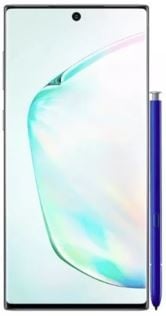What is HDR10+ and why does it make the Note 10 screen better?

Best answer: HDR10+ is a High Dynamic Range format that adds dynamic metadata to the HDR10 signal. Rather than set the dynamic range to a static set of numbers, HDR10+ can set and change the boundaries on the fly based on the content your screen is displaying. That means you'll have better detail and a fuller range of color, especially in scenes which display mostly light or mostly dark content.
- A great display: Samsung Galaxy Note 10 ($950 at Samsung)
- Even bigger body: Samsung Galaxy Note 10+ ($1,100 at Samsung)
What is HDR10+?
HDR10+ is an HDR (High Dynamic Range) format created by Samsung designed to expand on the HDR10 format by allowing for dynamic metadata to continuously tweak the display settings so that you're always seeing the most and best color possible. Unlike Dolby Vision — which also adds dynamic metadata to the HDR signal — HDR10+ is royalty-free and open so that any company which makes displays can adjust it to best suit its product.
Even with millions and millions of colors, there will still be some that aren't in the range of your display.
A display has an inherent range of colors it can reproduce, and that's called its dynamic range. When you're talking about HDR10+, that range is well over a billion colors. That's a lot of distinct colors, but there will always be something to see that falls outside of that range. When that happens, the bright colors will be washed out and the dark colors will be blocked out and black. HDR10 was designed to expand the range of both the display and the signal it is receiving so that more colors can be reproduced.
This is done through what's known as metadata. Think of metadata as a set of notes that is transmitted along with the image information that tells a display how to tune itself and where to place the midpoint of its dynamic range. Once the midpoint is set, you get to see millions of colors brighter than it is and millions of colors that are darker. With HDR10+, which has a dynamic metadata channel, that midpoint can be set for each individual frame of a video or every static image that's being displayed instead of being set once.
Dynamic metadata means the color correction can be done on the fly.
Every display will benefit from a dynamic HDR metadata channel, even though Samsung developed it for televisions as competition to Dolby Vision — which carries some very expensive licensing fees along with dynamic HDR metadata. According to Samsung, having an open standard that can be tweaked by display manufacturers so that the software can best present content on a particular display is important. It means that mid-range displays like the ones in low-cost televisions and mobile devices can offer similar performance to the most expensive display panels.
Brighter and darker
Be an expert in 5 minutes
Get the latest news from Android Central, your trusted companion in the world of Android
The best thing about HDR10+ is that it allows your display to show brighter colors or darker colors depending on exactly what is being shown on it. Because the midpoint of the display's inherent color range is movable while you're watching a video (for example) a scene with mostly bright colors will show more of them instead of having the brightest look white, and a scene with mostly dark colors can do the same without everything turning black or blocky. That sounds awesome.
HDR10+ is being adopted quickly by hardware makers and content providers will soon follow.
The one drawback is that the content must also support HDR10+ because it is the content producer that sets the metadata channel. In the U.S., you can already watch Amazon Prime video in HDR10+ as long as you have a supported display. At the end of 2018, Samsung announced that the HDR10+ ecosystem has over 45 partners, one of which is Qualcomm. On the content side, 20th Century Fox, Warner Bros., and Rakuten TV are ramped up to deliver HDR10+ video and it's expected that many more providers will sign on, since the royalty-free standard is being adopted quickly by hardware manufacturers.
The Galaxy Note 10 will use HDR10+ to add to Samsung's already amazing display technology, and with the right content we expect to be blown away by how great our favorite video looks.

Jerry is an amateur woodworker and struggling shade tree mechanic. There's nothing he can't take apart, but many things he can't reassemble. You'll find him writing and speaking his loud opinion on Android Central and occasionally on Threads.

